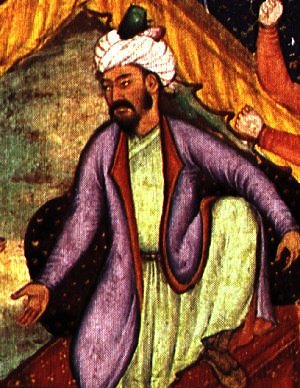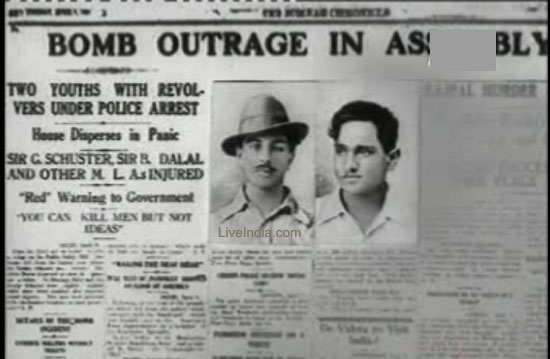First published on NewsYaps
In 1916, the Mahatma spoke in Banaras Hindu University on the question of English. He said:
In 1916, the Mahatma spoke in Banaras Hindu University on the question of English. He said:
“I am hoping that this University will see to it that the
youths who come to it will receive their instruction through the medium of
their vernaculars. Our languages are the reflection of ourselves, and if you
tell me that our languages are too poor to express the best thoughts, then say
that the sooner we are wiped out of existence the better for us. Is
there a man who dreams that English can ever become the national language of
India? Why this handicap on the nation? Just consider for one moment
what an unequal race our lads have to run with every English lad.”
I am unaware of the reaction to Gandhi’s confident claim expressing
incredulousness at any Indian ever wanting English to be the national language.
But the reaction to Mulayam Singh Yadav’s much more modest proposal that MPs in
Parliament speak in Indian languages was met with a rather solid wave of
disapproval. One headline from a piece published in the Mint
called Mulayam “notoriously regressive” and attacked him for keeping “his
people impoverished and vote-banked” (when nouns are being verbed you know
things have gotten serious). The Times of India called the
proposal “absurd” and opined that it leaked of “political hypocrisy”. The Indian
Express, in an editorial, characterised this proposal as a “march to
the past” and connected this with the overall failure of the SP government in
UP.
That Mulayam’s proposal is impractical and will hardly
change a thing is something which is obvious. In fact, this is a minor demand
as far as he is concerned; in earlier times, Netaji had even demanded the
banning of English from the country overall, the success of which can be gauged
by having a look at the language this very write-up uses.
That being said, the reaction to this is almost as silly as
the proposal in the first place. What our Anglophone class doesn’t realise is that
there are large segments of the country which do have grievances with the heaven-born
status that the language enjoys and it is this sentiment that Mulayam seeks to
channel.
English as a glass
ceiling
In a TV debate about this matter, Madhukar Jaitley of the SP
rubbished claims to this being a regressive move and claimed that what was
wrong was that you needed to know English—a language spoke by less than 10% of
the country—to get a white-collar job. This is a point that is tough to argue
with. India, burdened with the worst of colonialism and a particularly elitist
culture, genuflects to English as few countries do. English, in India, is
effectively a glass ceiling. You might be the smartest person out there for the
job, but if you’re “Hindi-medium” then, well, you might as well forget it.
This extreme position that English occupies is something
that a lot of the people who are befuddled by Mulayam’s stance don’t get. Yes,
“we should love all languages” as Derek O’Brien condescendingly reminds us, but
that’s easier said than done when this particular language is one of the major
things that stands between you and social advancement. This is a point that
many people who extol the English-is-global-language point don’t get. To quote
from Sandipan Deb’s piece in Mint:
“Whether we like it or not—and Mulayam can have long
discussions with Germans or Russians or Arabs about it through English
interpreters—English is our planet’s principle medium of both communication and
commerce... The Chinese, for instance, recognize that and have been pouring in
enormous resources to teach their children the language.”
This is true. English is the principal medium of
communication globally and if you wanted to have an international conversation,
you would have to use English. But what about if each of these countries wanted
to have an intra-national conversation? Would an Egyptian
speak to an Egyptian in English? And Germany already follows
Mulayam’s advice of using its native language in its legislatures. If Sandipan
really did want to copy what the Germans, Arabs and Chinese were doing, he’d
pretty much be agreeing with Mulayam. The point is simple: let us not confuse a
global lingua franca—a link language—with our internal
languages of business and governance. As far as the latter is concerned, Mulayam,
the Germans, the Arabs, the Russians, the Chinese and almost every nation on
earth agrees that a native language should be used. As for English being used
as a global lingua franca, no one really
disagrees with that, or should not at the very least. But as anyone who has
observed India would know, English has gone far beyond being just a utilitarian
global lingua franca and occupies a position of power today
in India. If English was actually just a lingua franca, it
would be absent in linguistically uniform places such as Delhi or not find a
place in Bombay where, since it is understood by so few people, it would do a
horrible job of acting as a lingua franca.
So why is English
still India’s lingua franca?
Talk of lingua franca though brings us to
another issue: India’s diversity. Not only was Sandipan’s comparison to Germany
wrong because it ended up supporting Mulayam’s point, but it was also wrong because
India is wildly multilingual unlike Germany. Not only does India need a lingua
franca to communicate with other countries, its regions also need one
to talk to other regions of India.
Here the contention of the Hindiwallahs is that since Hindi
is already spoken by such a vast number of Indians (~33% speak it as their
native tongue as per the 2001 census) it is the natural choice as a national
language. Unfortunately, learning a new language is not a simple first-past-the-post
exercise. For the huge number of non-Hindi speakers, learning a new language
has to confer commiserate economic and social benefits for them to take the
time and effort to learn it. Hindi clearly did not offer that in 1947. Yet
Hindi was sought to be imposed, by fiat almost, on non-Hindi speakers. Almost
as a back lash, non-Hindi speakers stuck all the more to English. As Anna
Durai, put it across rather eloquently: “Why should Hindi be our national
language? Is it because the majority speak Hindi? Then why is the Peacock our
national bird and not the crow despite the latter being the most numerous?”
What is odd is that even after 66 years of Hindi promotion
by the Centre, it has been unable to create enough critical mass for Hindi. This
can be explained maybe by the fact that the Hindi promoted by the Centre is hardly
even spoken by the 33% who label themselves as “Hindi speakers”. Our census,
when it comes to Hindi is a bit of a joke. In 1881, for example, the census
recorded 98% of UPites to be ‘Hindustani’ speakers. By 1951 that number had
dropped to 10% and by 1961 to 0.1%! The truth of the matter is that Hindi, even
in the Hindi heartland is an urban language and the rural areas speak a variety
of languages such as Avadhi, Braj or what have you. To further weaken the
cause, the Hindi that the Centre promotes is itself far removed from the urban Hindi
of, say, Delhi, Lucknow or Kanpur, being highly Sanskritised and far removed
from common speech. It’s a bit like the British Government promoting Shakespearean
English today. Thus you have the extremely odd sight of signs in government
offices in Patna or Lucknow which advertise and promote Hindi. I know off no
other major language in the world which needs to be advertised to its own
native speakers.
Given these deficiencies, Hindi is far from established in
its own heartland, thus it’s not surprise that it hasn’t been able to take over
the country. The elites prefer to stick to English and it remains the language
of aspiration.
The Future
So is this the way it’s going to be? Is the rise and rise of
English a fait accompli? It’s hard to imagine the decline of
a language seemingly as entrenched as English. But the same could maybe have
been said about Latin in Europe and Sanskrit in India: both languages once were
widespread and powerful but lie dead today.
Personally, I don’t think that English has too bright a
future in India as a popular language. English is spoken by too thin a patina
of the Indian population to ever be a true lingua franca
except amongst the elite. In spite of the bungling and chauvinism by the
Hindiwallahs, this lingua franca is still to be Hindi. Indeed,
if we consider the spread of Hindi-Urdu-Hindustani over the past 400 years,
it’s been nothing short of remarkable. What started out as the language of
Delhi and a tiny sliver of Western Uttar Pradesh is now understood, at least at
some basic level, from Peshawar in West to Calcutta in the East and from
Srinagar in the North to Bangalore in South. In the 19th century, this was
initially driven by the adoption of Urdu by the North Indian elite and the
British Raj. The real fillip, though, came when the Bombay film industry,
located far away from the Hindi heartland in Maratha country, adopted the simple
spoken form of Hindi-Urdu as their language. If today the arcane register
propagated by the Indian government drives people away, the shine and glamour
of Bollywood has made Hindi appealing to large sections of the Indian
population. This engine has driven the penetration of Hindi into far off
regions like Kerala and rural Bengal. In fact, on a visit to Bangladesh, I
found that while most couldn’t speak Hindi all that well, years of Bollywood
had ensured that they understood the language just fine.
Of course, official languages require more than the
entertainment industry. But as a popular language, the way things stand,
Mulayam can take heart from the fact that Hindi has a far greater chance of
becoming India’s lingua franca than English does.





